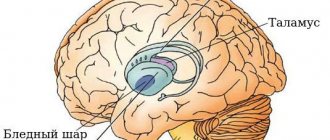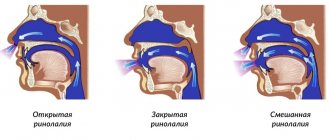Dyslalia and dysarthria are very similar speech development disorders. In both cases, there is a defect in sound pronunciation, often in the same phonemes
It is very rare that an ordinary person, simply by reading about these disorders on the Internet, will correctly distinguish one from the other. Meanwhile, it is important to know how dyslalia differs from dysarthria, since treatment and correction in both cases are individual.
What is dysarthria
For the first time, people started talking about a speech disorder, which was later called dysarthria, about a hundred years ago. Then the researchers identified a group of sound pronunciation disorders, calling them tongue-tied. A little later it was divided into functional and organic. At the same time, factors that could lead to dysarthric speech disorders were identified.
Despite the fact that dysarthria has been studied for so long, much remains unclear. Today there are two main approaches to the study of this speech disorder:
- neurological. This direction takes into account the clinical manifestations of dysarthria and the area of damage to the central nervous system. Speech disorders are considered in conjunction with other movement disorders that the patient has.
- neurophonetic. Phonemic analysis of dysarthric speech is carried out taking into account psycholinguistic techniques. More attention is paid to identifying and studying neurophonetic syndromes of dysarthria, and the clinical picture of pathology fades into the background.
That is why different researchers give different concepts of pathology. Some people believe that dysarthria should be called a pronunciation disorder in which the prosodic aspect of speech is disrupted. In this case, the definition of pathology is given based on its external manifestations. A number of researchers call dysarthria a coordination disorder of speech that occurs as a result of damage to the efferent system and motor analyzer. That is, unintelligible speech is only a symptom of another pathology.
Both of these definitions are correct and in some way complement each other. In simple terms, dysarthria can be called any disorder of sound pronunciation caused by organic damage to the brain. This can be either a complete lack of speech or a nasal, slurred tone of pronunciation.
The controversy extends beyond the definition of dysarthria itself. The classification of the types of this speech dysfunction also causes a lot of controversy.
Types of dysarthria according to O.V. Pravdina
Now there are several principles for dividing speech pathology such as dysarthria into types. In domestic speech therapy, the most common classification is based on the location of the affected part of the central nervous system.
The neurological approach is reflected in the classification proposed by O. V. Pravdina. Their description is presented in the table below:
| Name | CNS affected area | Speech Impairment |
| Cortical | Cortical structures of the brain. It is the cortex that is responsible for the functioning of the speech muscles and the human ability to speak. | Partial paralysis of the muscles of the articulatory apparatus, the sequence of movements when setting articulatory poses is disrupted. The pronunciation of consonants suffers. |
| Subcortical (extrapyramidal) | The striatum and pallidum are subcortical nuclei. These structures regulate muscle tone and also make it possible to give emotional expressiveness to speech. | The muscle tone of the speech apparatus is unstable, the muscles contract involuntarily. The person experiences difficulty trying to maintain articulatory posture. Sound disturbances are unstable. |
| Cerebellar | Conducting pathways and cerebellar nuclei. The respiratory, vocal and articulatory apparatus stop working synchronously. | A person’s speech sounds chanted; this happens involuntarily. Most sounds take on a nasal tone. Speech loses its emotional coloring. |
| Pseudobulbar | Systems responsible for conducting nerve impulses from the cerebral cortex to the nuclei of the medulla oblongata. | Bilateral paralysis of the muscles of the speech apparatus, increased muscle tone, they are practically motionless. Characteristic softening of sounds. Complex and differentiated sounds are affected selectively. |
| Bulbarnaya | Peripheral motor nerve nuclei (brain stem) | Paralysis of the muscles of the speech apparatus (right- or left-sided), the ability to involuntary and voluntary movements is lost. Speech takes on a nasal tone. |
Despite the fact that Pravdina’s classification is used by a large number of specialists, many researchers still consider it inaccurate. Most controversy arises regarding cortical dysarthria. This type of pathology is often regarded as a manifestation of motor aphasia, especially in adults.
FN
FFN
ONR
Comparative analysis of dyslalia, rhinolalia, dysarthria.
| p/p | Clinical and pedagogical classification definition | Etiology | Nature of damage to the vocal apparatus | Mechanisms | Forms. Subforms. | Degree of defect manifestation | ||
| Biological factors | Social and psychological factors | |||||||
| 1. | Dislalia | |||||||
Other types of classifications
The French neurologist Tardieu proposed classifying dysarthria according to how well others can understand the dysarthric person’s speech. As a result, he identified four degrees of severity of the violation:
- Only a specialist can identify violations.
- Speech problems are noticeable to others, but speech is understandable.
- Only people from his immediate environment can understand a child.
- There is no speech at all or it is incomprehensible even to the child’s loved ones.
This classification is very clear and convenient. It is often used in their work not only by speech therapists, but also by educators, psychologists, and teachers.
In speech therapy work, the division of dysarthria into types is also often used based on the syndromic approach. In this case, the speech therapist should work together with a neurologist. The doctor determines the leading symptom, and the teacher identifies similar defects in the functioning of the speech apparatus.
Using this approach made it possible to identify the following types of dysarthria:
- spastic-paretic – with the leading syndrome being spastic paralysis;
- spastic-rigid – spastic paralysis and rigidity syndromes;
- hyperkinetic – hyperkinesis;
- ataxic – ataxia;
- spastic-atactic – spastic paralysis and ataxia;
- spastic-hyperkinetic – spastic paralysis and hyperkinesis;
- spastic-atacticohyperkinetic – spastic paralysis, ataxia, hyperkinesis;
- ataxic-hyperkinetic – ataxia and hyperkinesis.
Dysarthria is also divided into types based on the severity of the disorder. In mild forms, speech disorders are minor, often noticeable only when tired. This form is also called erased.
Mild dysarthria has much in common with dyslalia. The only difference is that dysarthric sufferers experience neurological microsymptoms.
The average degree is direct dysarthria (severe), characterized by obvious speech impairments, it becomes slurred, blurred, but generally remains understandable to others.
In severe dysarthria, a person’s speech cannot be understood. If the pronunciation side of speech is impossible, then this form is called anarthria.
How to correctly diagnose a speech disorder
The most important advice in a situation of problematic speech communication is not to listen to girlfriends, neighbors, acquaintances, that is, “it happened to me.” Perhaps it was, but in each case the violations occur in an individual form. Moreover, avoid visiting grandmothers who “pour out their voices.” Usually there is unsanitary conditions and a minimum of medical skills. If someone experienced improvements after such meetings, this is a coincidence. No slander, killed roosters, etc., are in any way connected with speech, much less, they do not recognize the differences between dyslalia and dysarthria.
To specify the diagnosis, you need to contact a qualified speech therapist. There are such specialists in every city. After a complete examination, he may also send you to a neurologist. A comprehensive examination is a necessity, not a waste of time. It is sometimes difficult to get a routine diagnosis without a referral, especially in small towns where there is only one doctor for the entire area. Therefore, take the opportunity to know exactly what your child is suffering from and how to treat it.
Reasons for the development of dysarthria
Dysarthria develops as a result of organic damage to the central nervous system. Pathology can occur at different periods of a person’s life. But modern research has shown that in approximately 80% of cases it is congenital. That is, brain damage occurs during the intrauterine period of life.
The main reasons for the development of congenital pathology include:
- Viral and infectious diseases of the mother.
- Kidney failure, as well as pathologies of the heart and vascular system in women.
- Injuries during pregnancy, both physical and psychological.
- Radioactive exposure of a pregnant woman.
- Conflict of Rh factor and mismatch of blood groups between mother and fetus.
- Severe intoxication, including alcohol, nicotine and drugs.
The above factors pose the greatest danger to the fetus in the first three months of pregnancy.
Pathology can also occur at the time of birth. Previously, birth injuries were considered the main factor in the development of dysarthria. However, modern research has made it possible to classify problematic childbirth as secondary factors that aggravate existing pathologies in the fetus. The primary cause can only be considered the unsuccessful use of obstetric aids by medical staff. Brain injuries resulting from medical errors can lead to the development of cerebral palsy and other pathologies.
Impairment of the motor function of the speech apparatus can occur in a child born completely healthy. Dysarthria can occur as a result of a neuroinfection, poisoning (severe intoxication), brain injury, or oncological pathologies of the central nervous system. In adults, dysarthria can be caused by a stroke.
Correction of dysarthria is carried out in two directions at once. First of all, it is necessary to restore the functioning of the central nervous system, as far as the degree of its damage allows. This is done by a neuropathologist. At the same time, a defectologist or speech therapist carries out speech therapy work, which is aimed at normalizing the functioning of the articulatory apparatus.
Dislalia
Dyslalia (dis - disorder, lalia - speech) is a violation of sound pronunciation with normal hearing and intact innervation of the speech apparatus.
Dyslalia is divided into mechanical (associated with damage or abnormal development of the organs of articulation as a result of injury or thumb sucking habit) and functional (not associated with such damage).
Disorders of the structure of the articulatory apparatus include abnormal structure of the jaws (bad bite), teeth, palate (too high, too low, cleft), tongue (massive, too small, shortened hyoid ligament).
With timely speech therapy assistance, dyslalia is quickly and irrevocably compensated for in children. In adults, too, the prognosis is good.
PRACTICE EXAMPLES
Nikolay, 26 years old. He applied with a violation of the sound pronunciation of the sound “R, R” and pronounced it correctly. 4 lessons were held. We did not expect such a quick and dramatic result. The control session after 3 months confirmed the complete automation of sound. I studied a lot on my own.
Sergey, 22 years old. I contacted him regarding a violation of the sound pronunciation of “R, R” . The cause of the violation was: malocclusion, shortened hyoid ligament. After the operation to trim the frenulum and correct the bite, a course of speech therapy classes (10 lessons) was conducted, resulting in complete automation of sounds in independent speech.
How to recognize dysarthria
Despite the fact that dysarthria is a very complex speech disorder, it can still be corrected, especially if we are talking about an erased form of the disorder.
Dysarthria can be recognized from the first days of a child’s life, and parents should be wary of the following points:
- When breastfeeding, weak nipple latching and sucking reflex may indicate weakness of the muscles of the articulatory apparatus. Milk leaks from the mouth and even the nose;
- The child, later than his peers, begins to hold his head up (5-7 months), try to sit up and crawl (8-11 months), and walk (after 18 months);
- the child develops speech late, sounds are monotonous, articulation is unexpressed;
- increased salivation. The child cannot swallow his own saliva due to flaccid muscles of the tongue, cheeks and lips. The mouth is always open;
- problems with drinking from a cup, chewing food;
- lack of substantive activity. The baby does not show interest in toys, his actions with them are inadequate or inappropriate for his age;
- The baby does not react to loved ones and does not show joy. There is no smiling, walking, or motor activity of the arms and legs.
At a later age, dysarthria may be indicated by disturbances in breathing and speech rhythm.
A child, when talking, pronounces words with different volumes and intonations or in syllables. With dysarthria, a nasal sound appears. Due to the increased tone of the articulatory muscles, the child may get tired during the conversation. In addition to speech disorders, dysarthria also causes motor disorders. The child may grasp objects too strongly or weakly. The grasp reflex may be absent altogether. Spatial and visual and spatial perception are also affected. The child cannot correctly determine the shape and size of an object, for example, when playing with various sorters or pyramids. Difficulties arise when performing physical exercises.
Fine motor skills are especially affected in dysarthric children. It has long been proven that there is a relationship between the ability to perform precise coordinated movements of the hands, the development of speech and mental perception. Insufficiency of the motor part of the brain leads to the fact that it is very difficult for a child to perform pincer grasp with fingers, or it is not performed at all. In erased forms of dysarthric disorder, the development of fine motor skills helps to quickly “launch” speech.
Children who have a history of pathologies associated with the prenatal and birth periods are required to be observed by a pediatric neurologist. The doctor should pay attention to existing problems. If pronounced deviations in the baby’s development are not observed, then he is removed from the register.
Further monitoring of the child's condition is carried out by his parents. When the first alarming symptoms appear, it is better to immediately contact a specialist.











